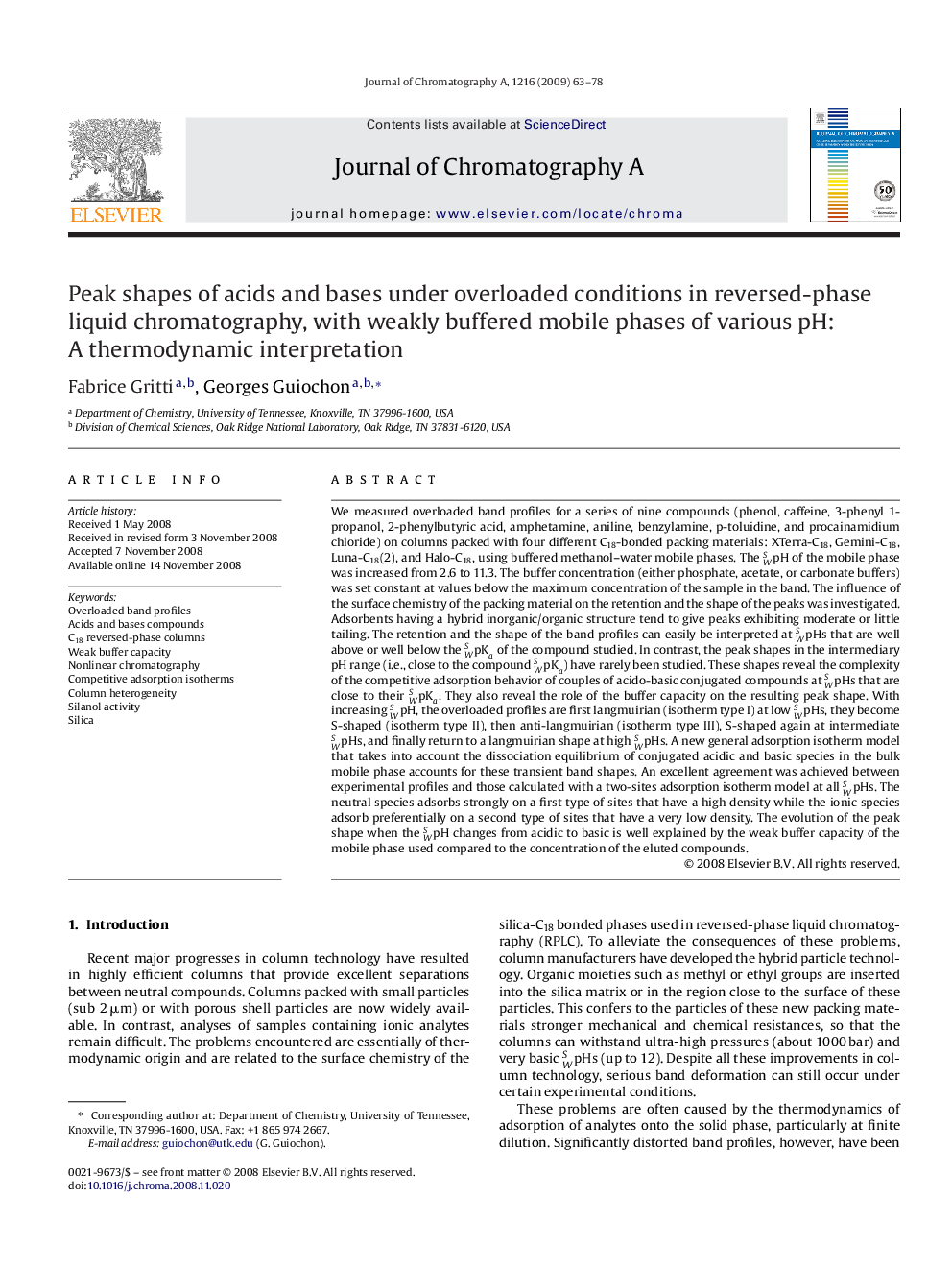| Article ID | Journal | Published Year | Pages | File Type |
|---|---|---|---|---|
| 1206958 | Journal of Chromatography A | 2009 | 16 Pages |
We measured overloaded band profiles for a series of nine compounds (phenol, caffeine, 3-phenyl 1-propanol, 2-phenylbutyric acid, amphetamine, aniline, benzylamine, p-toluidine, and procainamidium chloride) on columns packed with four different C18-bonded packing materials: XTerra-C18, Gemini-C18, Luna-C18(2), and Halo-C18, using buffered methanol–water mobile phases. The pHWS of the mobile phase was increased from 2.6 to 11.3. The buffer concentration (either phosphate, acetate, or carbonate buffers) was set constant at values below the maximum concentration of the sample in the band. The influence of the surface chemistry of the packing material on the retention and the shape of the peaks was investigated. Adsorbents having a hybrid inorganic/organic structure tend to give peaks exhibiting moderate or little tailing. The retention and the shape of the band profiles can easily be interpreted at pHsWS that are well above or well below the pKWSa of the compound studied. In contrast, the peak shapes in the intermediary pH range (i.e., close to the compound pKWSa) have rarely been studied. These shapes reveal the complexity of the competitive adsorption behavior of couples of acido-basic conjugated compounds at pHsWS that are close to their pKWSa. They also reveal the role of the buffer capacity on the resulting peak shape. With increasing pHWS, the overloaded profiles are first langmuirian (isotherm type I) at low pHsWS, they become S-shaped (isotherm type II), then anti-langmuirian (isotherm type III), S-shaped again at intermediate pHsWS, and finally return to a langmuirian shape at high pHsWS. A new general adsorption isotherm model that takes into account the dissociation equilibrium of conjugated acidic and basic species in the bulk mobile phase accounts for these transient band shapes. An excellent agreement was achieved between experimental profiles and those calculated with a two-sites adsorption isotherm model at all pHsWS. The neutral species adsorbs strongly on a first type of sites that have a high density while the ionic species adsorb preferentially on a second type of sites that have a very low density. The evolution of the peak shape when the pHWS changes from acidic to basic is well explained by the weak buffer capacity of the mobile phase used compared to the concentration of the eluted compounds.
